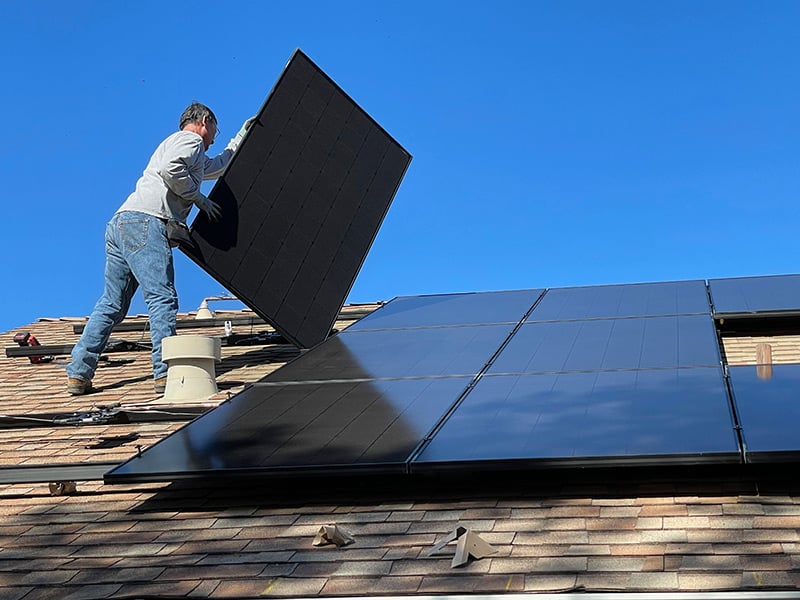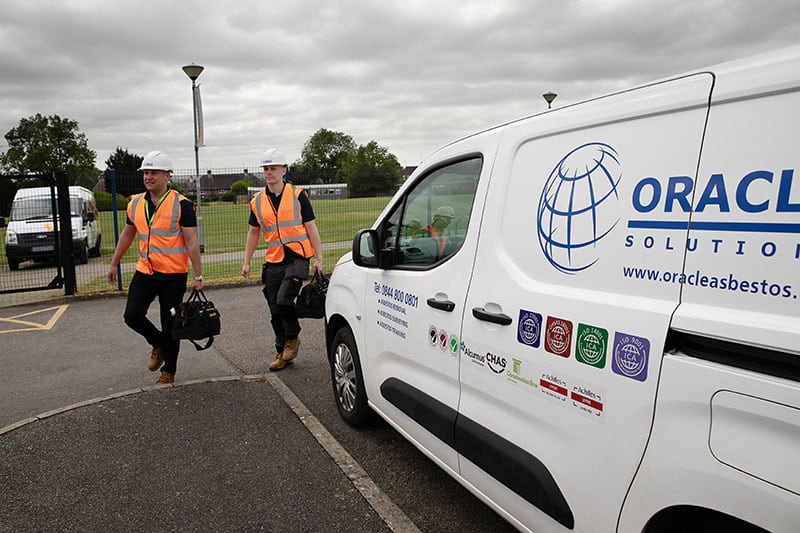How does asbestos affect renewable energies?
The ever-heightening importance of renewable energy in our lives should not be doubted. Not merely individuals, but also entire businesses, governments, and societies depend on energy in order to carry out all manner of vital everyday processes, ranging from the driving of petrol-fuelled vehicles to the heating of homes and businesses.
Historically, however, our world has been greatly dependent on less-than-green sources of energy, including fossil fuels like oil, coal, and gas. Sadly, these resources cause considerable damage to the only planet Earth we have, encompassing such effects as irreversible deforestation from gas extraction, oil spillage into the oceans, and the atmosphere being poisoned due to coal mining.
We could go on and on listing some of the horrendous impacts that sustained fossil-fuel use has on our world, except that this is not the focus of this article. Instead, we wish to draw attention to renewable energy – energy, in other words, that is derived from clean and natural resources – and the connection between such energy and asbestos.

There are many reasons why renewable energy is becoming so important to our world. One clue comes in the name, “renewable”; it is energy that can be constantly renewed, never running out. It also does not contain any toxic ingredients or nasty chemicals, and does not harm the environment.
If, then, our societies can draw upon renewable energy to an ever-greater extent in the months and years to come, this will surely represent a “win-win” for the world, and our hopes of being able to live on a hospitable planet in the future.
One eco-friendly change that we have been seeing in recent years, is an increasing move towards widespread use of electric vehicles (EVs). The UK’s EV fleet reportedly reached more than 1.04 million cars in 2022, with that year seeing a 40% rise in electric car sales.
However, the combination of renewable energy’s ever-greater importance and heightening EV sales, is underlining that there will also be a need for more widespread and easily accessible renewable EV charging infrastructure over the years to come.
The UK Government has set a bold target of installing 300,000 public EV chargers by the end of this decade. However, with most EV charging being done at home, it is fair to say that EV charging amenities will need to be fitted at all manner of both public and domestic sites in the years ahead.
That, in turn, will necessitate a certain level of disruption to existing sites and premises up and down the country. It is a situation that could bring a risk of on-site asbestos materials also being disturbed – so it is crucial for building owners and dutyholders to be aware of this.
Renewable energy and asbestos
The link between the increasingly widespread and sophisticated renewable energy solutions that we are seeing in our world today, and the long-banned “historical” substance known as asbestos, might not be obvious to a lot of observers. This simply further underlines how important it is for anyone responsible for a given building to be alert to that link.
It is, indeed, true that all forms of asbestos were finally banned in the UK way back in 1999. However, there has never been an automatic requirement in UK law for any and all existing asbestos to be removed from any and all buildings or sites where it may be present. This is significant, as the naturally occurring mineral known as asbestos was once extremely widely used in UK construction.
First commercially mined in the middle of the 19th century, asbestos was especially widely used in the UK construction sector from around the 1950s until the 1980s. The import, supply, and use of crocidolite and amosite asbestos was banned as of 1st January 1986, but it took until late 1999 for a final ban to be imposed of all other types of asbestos in the UK.
What this means is that when it comes to any building in the UK constructed prior to the year 2000, it is perfectly possible that asbestos could still be contained inside. If the material is disturbed, it can release loose fibres, which – if breathed in or ingested – could heighten the risk of the exposed individual going on to develop a serious health condition such as mesothelioma, asbestosis, or asbestos-related lung cancer.
From a health and safety point of view, the good news is that stringent regulations now exist in the UK that are aimed at controlling the risks of asbestos on a site where it might still be present.
However, it does mean that if you are seeking to have renewable energy systems installed at a site for which you are responsible, you will need to take sensible steps to ensure no disturbance occurs to any asbestos that might be on-site. Examples of such renewable energy systems, which may necessitate building modifications when installed, include EV charging stations, solar panels, and heat pumps.
So, if you are looking to have systems like the above installed at a building that dates from before the year 2000, you will need to be especially vigilant about possible asbestos risks.
The impact on electric vehicle (EV) charging
As we explained above, electric vehicles (also known as EVs) are growing more and more popular in the UK. Although the UK’s looming ban on the sales of new petrol and diesel vehicles was recently put back five years to 2035, it is expected that the EV market will continue its sustained growth right up to that time.
But of course, with the rapidly heightening popularity of electric cars, comes a need for extensive EV charging infrastructure. Not only will charging stations need to be widely available and accessible, but the UK’s motorists will need to be confident in the reliability of such infrastructure, which will also need to be compatible with a wide range of vehicles.
If the UK can get all the above right with its implementation of EV infrastructure, it will be in the best possible position to convince drivers to treat an EV as their primary mode of transportation. And renewable energy can play a major part in this.
Smart EV charging systems – which can offer benefits such as the automatic modification of charging rates and schedules in accordance with real-time power price and availability, thereby potentially reducing costs – can be combined with renewable energy sources, such as solar and wind power.
One major benefit of such renewable energies is that they can be harnessed in a decentralised way, with individuals and communities potentially generating their own power. This could help lessen their dependence on centralised power grids, and make the infrastructure and arrangements for EV charging resilient and ready for the future.
Solar panels: a brief overview
Solar panels – also known as solar electricity panels, or photovoltaics (PVs) – have long played a major role in the UK’s efforts to generate renewable energy. The principle behind these devices is simple: they convert the sun’s energy into electricity that a given domestic, public, or commercial building owner can then use for everyday energy needs.
Solar PV panels consist of electrically connected solar cells, enclosed in a frame. Light simply needs to shine on these cells, in order for a flow of electricity to be generated. Solar panels are among the most familiar systems for renewable energy generation up and down the country. Furthermore, with sunlight being free, the given building owner’s energy costs will be greatly reduced once they have paid for the initial installation.
However, the installation of solar panels on a building is, of course, a form of building modification. This means there might be scope for some level of disruption to be caused to the building fabric, depending on the exact nature of the structure. That, in turn, might necessitate being aware of potential asbestos risks.
Heat pumps: an eco-friendly alternative
Heat pumps are another solution that many building owners in the UK have invested in over recent years. These systems are regarded by many as an excellent “green” energy-generating alternative to a traditional boiler, and not without reason; heat pumps are much more energy-efficient than gas boilers.
A heat pump draws upon the same technology as an air conditioner, which uses a refrigerant to cool the building where it is installed. The only significant difference between a heat pump and an air conditioner is that a heat pump incorporates a reversing valve, which enables it to also heat the given property.
The two most common types of heat pump are air source and ground source heat pumps. As the term implies, an air source heat pump takes heat from the air, followed by boosting it to a higher temperature. Ground-source heat pumps, meanwhile, harness natural heat from under the surface of the ground, by pumping liquid through it in pipes. The heat pump then increases the temperature, with the heat being used for such purposes as heating and hot water.
Heat pumps offer considerable potential for reducing environmental impact and lowering energy bills. Again, however, it is important to be aware of the potential risk of asbestos-containing materials (ACMs) being encountered during the installation process, and what steps you will need to take to guard against this risk.
Asbestos and building disturbance
Investment in renewable energy systems and solutions such as heat pumps and solar PV panels unquestionably brings various benefits, in the short term as well as the longer term, for building owners and users, as well as for our planet as a whole.
However, there are also various ways in which disturbance may need to be caused to a building’s fabric, in order to fit such renewable energy systems. Such installation work frequently necessitates certain highly disruptive processes, such as drilling and the running of cables, which could pose dangers if the individuals carrying out such work do not even know whether (and where) historical ACMs may be present in the building.
As we referenced above, asbestos may still be present in UK buildings that date from before the year 2000, when the material was still legal to use in the construction sector. So, it will be of imperative importance of take the necessary steps to identify ACMs on any such site for which you are responsible.
Surveying for asbestos
Prior to any renovation or retrofitting work that is set to be carried out in a UK property that was constructed or renovated during the time asbestos was legal to use in this country, it is crucial to arrange for an asbestos survey.
As we have previously written about here at Oracle Solutions, it is a legal requirement for a commercial building built before the year 2000 to hold an asbestos survey.
The standard asbestos survey is known as an asbestos management survey. However, if you intend to carry out work on the property, there will be a need to arrange for a more in-depth survey to be undertaken, with this being known as an asbestos refurbishment or demolition survey.
By engaging the services of a suitably qualified asbestos surveyor before you proceed with the installation of a renewable energy system such as a heat pump, solar panels, or EV charging station, you can ensure the identification of any possible asbestos risks on your site. Knowing this information, in turn, will assist you in making the most sensible decisions to address such risks.
Refurbishment and asbestos
Any kind of refurbishment activities at a given building – whether or not the specific work being carried out includes the installation of renewable energy systems – can present a risk of asbestos being disturbed. This could be especially likely if you do not even know whether and where asbestos is situated in the particular building, and the condition and quantities of such materials.
As mentioned, the process of installing equipment or undertaking other refurbishment work at a given building, can present an elevated risk of accidental disturbance to ACMs. When this happens, the ACMs could release loose, and barely visible, individual fibres, which could be inhaled or ingested by someone nearby. That could then leave the exposed individual with an increased risk of serious health problems potentially decades into the future.
So, as a building owner or someone with the “duty to manage” asbestos under the Control of Asbestos Regulations 2012 (CAR 2012), you must never underestimate the importance of careful planning and risk assessment in relation to any suspected or confirmed ACMs on your premises.
Asbestos remediation
The term “asbestos remediation” refers to the process of “remedying” the issues and risks that asbestos can present on a given site. It is a broader term than “asbestos removal”, because while asbestos may indeed be removed from particular premises if it is judged to pose a sufficiently high risk, in some cases, ACMs might be left in place, and monitored and managed over time.
To reiterate what we stated above: there is no part of UK law that demands asbestos is removed from a building in any and all instances in which it might be present. In line with this, the UK Health and Safety Executive (HSE) continues to maintain that asbestos that is in good condition, and that has not been disturbed or damaged, poses negligible risk to health.
So, the steps that you take towards asbestos remediation at your property might not involve removal, but instead an alternative measure such as encapsulation. This would entail a protective layer of sealant being applied to the asbestos material, to guard against any future risk of loose fibres being released as a consequence of disturbance to the materials.
Alternatively, you might – with the assistance of a suitably qualified asbestos surveyor – come to the conclusion that certain ACMs on your site will need to be removed prior to any installation of renewable energy infrastructure.
With asbestos removal being such a specialised task, we would recommend that you hire an insured and certified asbestos removal operative for this process. They will know what to do in order to carry out a comprehensive and safe removal of asbestos on your site, so that you can be sure of this risk having been eliminated when you come to install renewable energy systems in the property.
Conclusion: tap into renewable energy, but also take care to ensure asbestos safety
We have outlined, embracing the ever-greater use of renewable energy, and investing in the systems that make this possible – such as EV charging infrastructure, solar panels, and heat pumps – is very much a good thing. However, it is also of critical importance to be alert to the fact that carrying out related building modifications could bring about the risk of disturbance to any asbestos that may be present in the given premises.
In this article, we have not – of course – sought to in any way deter you from investing in the renewable energy systems that will be so crucial in “doing your part” to help our planet. Instead, we would simply urge you to carefully consider asbestos, whenever you are implementing renewable energy solutions at a site for which you are responsible.
That will mean taking care to prioritise safety and sustainability when you pursue renewable energy projects in older buildings (specifically those dating from prior to the year 2000).
Would you like to find out more about how Oracle Solutions’ own resources and expertise could help you meet your asbestos management obligations as a dutyholder? If so, please feel free to give our team a call today, or to email us to request a competitive quote for any of our services.

Written by Mark Carter
Mark Carter is a renowned expert in asbestos management, offering clients vital guidance on compliance and safety. His expertise is invaluable for navigating asbestos regulations, ensuring both safety and legal adherence. Mark's role is central in providing effective asbestos-related solutions, helping clients achieve their business objectives with an emphasis on regulatory compliance and safety in asbestos management.


